What is a bicycle boulevard? Where would they go? How would they be implemented?
These are questions addressed in the City of Tucson’s Bicycle Boulevard Master Plan released in draft form this week.
The Tucson Bicycle and Pedestrian program is hoping to get feedback from the community about the plan to make any final changes.
According to bicycle and pedestrian planner Andrew Bemis, the plan includes:
- A summary of the history, current conditions, and benefits of bicycle boulevards in Tucson
- Design guidance for the construction of bicycle boulevards
- Conceptual plans and cost estimates for each bicycle boulevard corridor
- A prioritized list of bicycle boulevard projects
- A description of the implementation process
He wrote in an email to bicycle advocates that they are looking to make final tweaks before sending to the City Council.
Here are some of the highlights from the report:
1. What bicycle boulevards do:
Bicycle boulevards are residential streets designed to prioritize bicycling and enhance conditions for walking. Bicycle boulevards vary in character to reflect the unique neighborhoods they travel through, but all include the defining features and engineering tools to:
- slow traffic,
- reduce cut-through traffic, and
- assist bicyclists and pedestrians in crossing busier roadways. Bicycle boulevards encourage biking and walking as transportation options for individuals of all ages and abilities because they are safer and tend to be more comfortable than using major arterial roadways.
2. Existing bike boulevards and their effect on traffic and safety
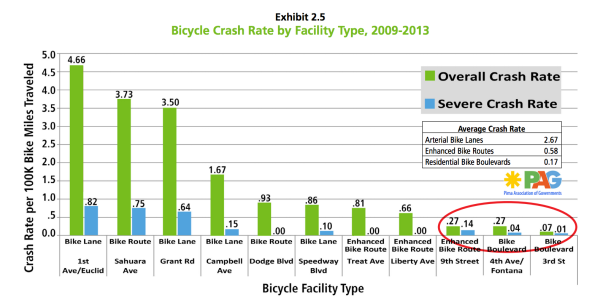 3. Pavement condition on bicycle boulevards
3. Pavement condition on bicycle boulevards
Pavement condition has a significant effect on the comfort and safety of cyclists. As such, it is an important factor in the effectiveness of a bicycle boulevard to attract riders. Many cyclists are likely to go out of their way to enjoy a ride on a well-paved street. At best, damaged pavement may create a frustrating and uncomfortable ride. At worst, bumpy, cracked or severely pot-holed roads can pose a challenge to a rider’s ability to control a bike.
TDOT recognizes the significance of pavement conditions on bicyclists comfort and safety. When possible, TDOT implements higher quality resurfacing treatments on designated bicycle boulevards during regularly scheduled resurfacing projects. For example, during the June 2015 resurfacing of the Sam Hughes neighborhood, and the June 2016 resurfacing of the Peter Howell neighborhood, the Third Street Bicycle Boulevard was milled and repaved – in order to provide a better riding surface and to get the most value by investing in segments that are used far more than most other residential streets. In 2017 the Third Street Bicycle Boulevard in Miramonte East and Speedway/Swan neighborhoods will receive the same treatment.
Resurfacing schedules in the City of Tucson are currently overseen by the Bond Oversight Commission, created to administer the 2012 voter-approved Road Recovery Bond program. Efforts are being made to further prioritize the bicycle boulevard network for future resurfacing investments.
4. Priorities
While the goal is to implement the whole bicycle boulevard network, the reality of the funding situation means that select corridors will be enhanced as funding becomes available. In order to strategically develop the network over time, a prioritization process was developed.
Priority was first given to the eight in-progress bicycle boulevards that have already received some funding. The remaining 55 corridors were then ranked based on a data-driven methodology involving an analysis of regional bicycle demand, corridor cost estimates, existing infrastructure, and overall network connectivity.
The City of Tucson will have to find money for the routes through different grants and posts of money.
Provide feedback:
The City of Tucson welcomes public comment and feedback on the DRAFT Bicycle Boulevard Master Plan. You can submit your comments using any of the options below:
• Fill out the online comment form
• Email your comments to Andrew.Bemis@tucsonaz.gov
• Call Andy Bemis at (520) 837-6596
• Write to us at :
City of Tucson Transportation Department
Bicycle and Pedestrian Program
201 N. Stone Avenue, 5th Floor
Tucson, AZ 85705

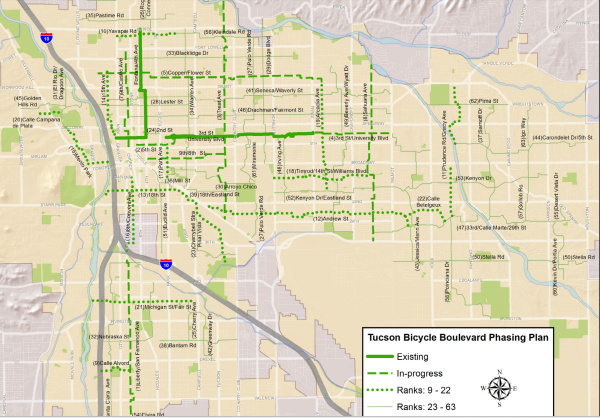
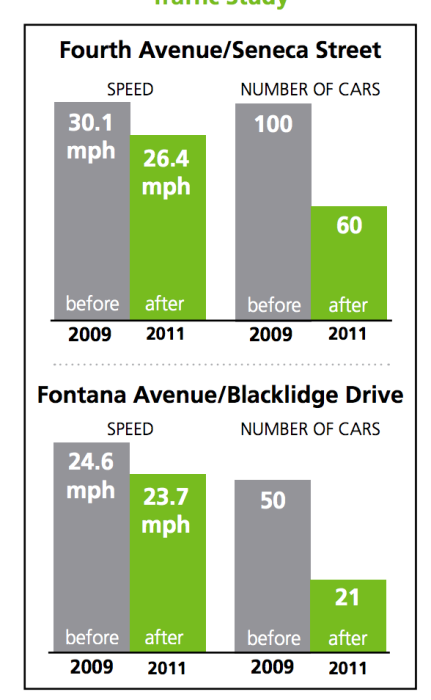
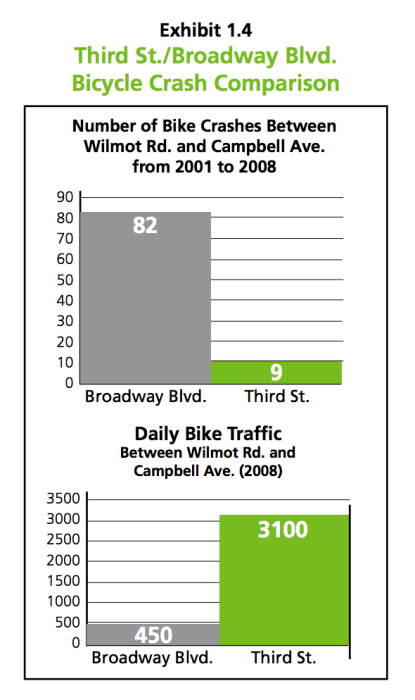
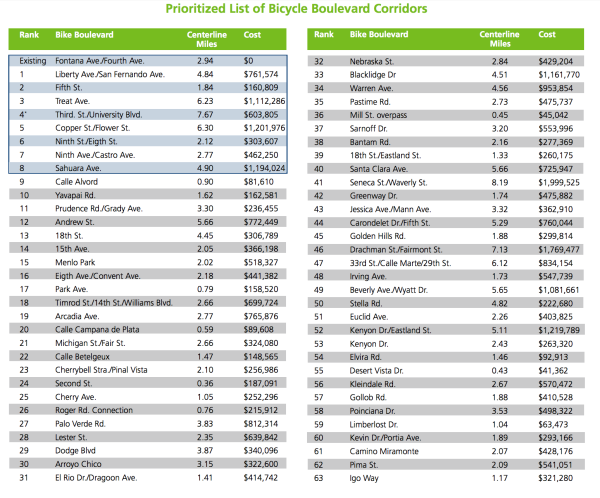
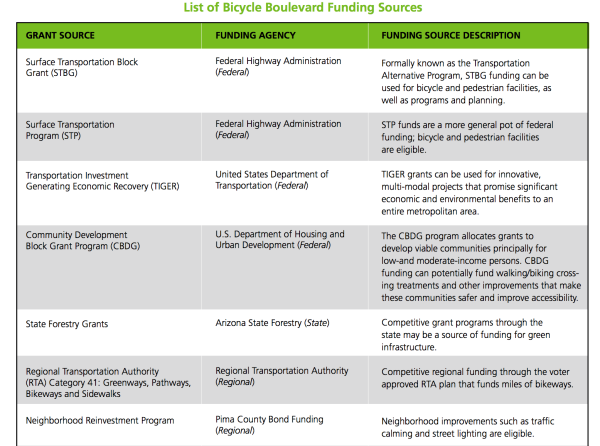
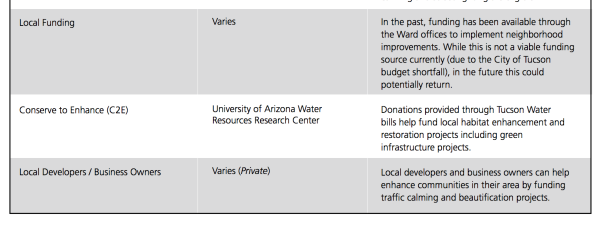
I can’t tell from the article what timeframe they may be looking at to extend the 3rd street route east. It exists now through signage but really stops at Craycroft. The lack of a flashing light crosswalk at Craycroft means you have to wait for cars to finally stop which can take several minutes. Seriously, people will not stop for you at a crosswalk unless you have a small child with you. I see lots of cyclists on the route east of Craycroft so I know it still get used, it just needs help.
do we have any unused old railroad tracks that we could just rip up, pave over and use as a bike path?
I posted this on the COT’s comment page:
“The signage for Bicycle Boulevards needs to include Bicycles May Use Full Lane (“BMFUL”) signs. I ride the 3rd St. Bikeway nearly every day and frequently am confronted with drivers who appear to assert what they believe is their superior right to the road. BMFUL signage would help a lot. I note that it’s a rare driver who knows the meaning of the sharrows (even assuming that they’ve seen the sharrows). It’s clear from this study that BMFUL is the way to go.
Here’s a quote from the study’s abstract:
““Bicycles May Use Full Lane” signage was the most consistently comprehended device for communicating the message that bicyclists may occupy the travel lane and also increased perceptions of safety. “Share the Road” signage did not increase comprehension or perceptions of safety. Shared Lane Markings fell somewhere between. “Bicycles May Use Full Lane” signage showed notable increases in comprehension among novice bicyclists and private motor vehicle commuters, critical target audiences for efforts to promote bicycling in the USA.”
http://journals.plos.org/plosone/article?id=10.1371%2Fjournal.pone.0136973
I’d be grateful for a considered reply to this question.
Thanks!”
@JoeDirt Often, I get people stopping for me at that intersection and others even though I’m not in in the crosswalk.
arsolot I have about a 0-40 record of people stopping for me and this is with me off the bike standing, waiting at the crosswalk. Same results at the 3rd and 4th St crosswalks. A flashing light should be installed like the one at Swan
We live along the N 4th Ave Bike Blvd., and consider it as a great amenity to our home, adding value to the real estate in the vicinity.
arsolot
Like you, I’d also like to see signage that instructs road users on what to do.
For example, the city is full of yellow diamond signs that merely point to the existence of a crosswalk, despite the legal fact that every intersection has crosswalks, whether painted or not. What would be even better, and these do exist in a few locations around town, are signs that say what is expected: “Stop for Pedestrians in Crosswalk.”
arsolot The “Bikes May Use Full Lane” sign can be found in a couple really obscure placements in town. Like they want to use it, but fear offending drivers too much. The sign’s usefulness goes beyond bikes even being present. The idea needs to be repetitively displayed so drivers get it. The city may balk at using them on Bike Boulevards because residential streets lack lines that define lanes. That’s pissy in my view. Ideal use is in places like 6th Ave. Sharrows become quickly obscured and seldom are noticed anyway.
As evidenced the first half of this year, traffic awareness might be a higher priority than. say, the easing of bike movement.
@zz arsolot I know of a few BMFUL signs: Tucson Blvd north of Prince, Sellarole near Harrison are pretty obscure. But, there’s BMFUL signage on Congress, downtown.
I’m VERY eager to have the COT use BMFUL signage throughout our town. I find the ubiquitous “Share The Road” signs almost offensive for a variety of reasons. Among those reasons: they lack meaning, they fail to communicate the first-come-first served nature of road use by bikes and often motorists believe that STR means that bikes are required to move out of the way.
These STR signs are particularly bad when, due to construction or other reasons, a bike lane isn’t available. Then, the COT puts up “Share the Road with Care” near a “bike lane ends” sign. I’d so much prefer a BMFUL sign to accompany the “bike lane ends” sign in a construction zone.